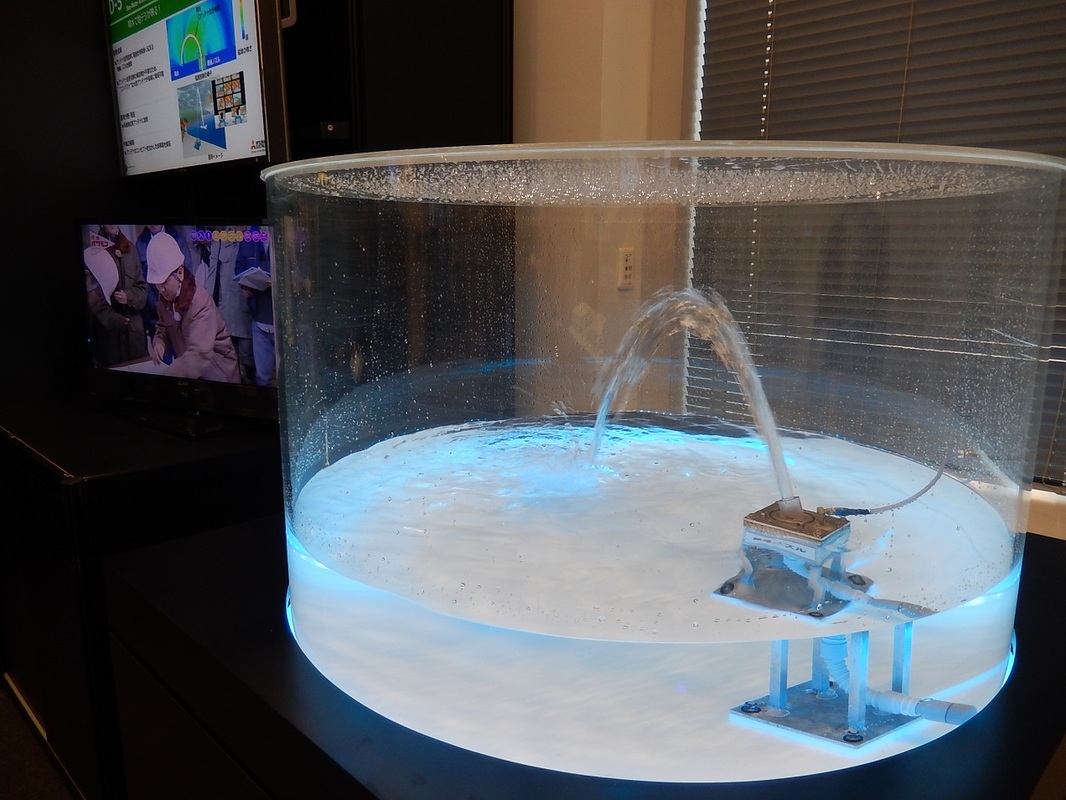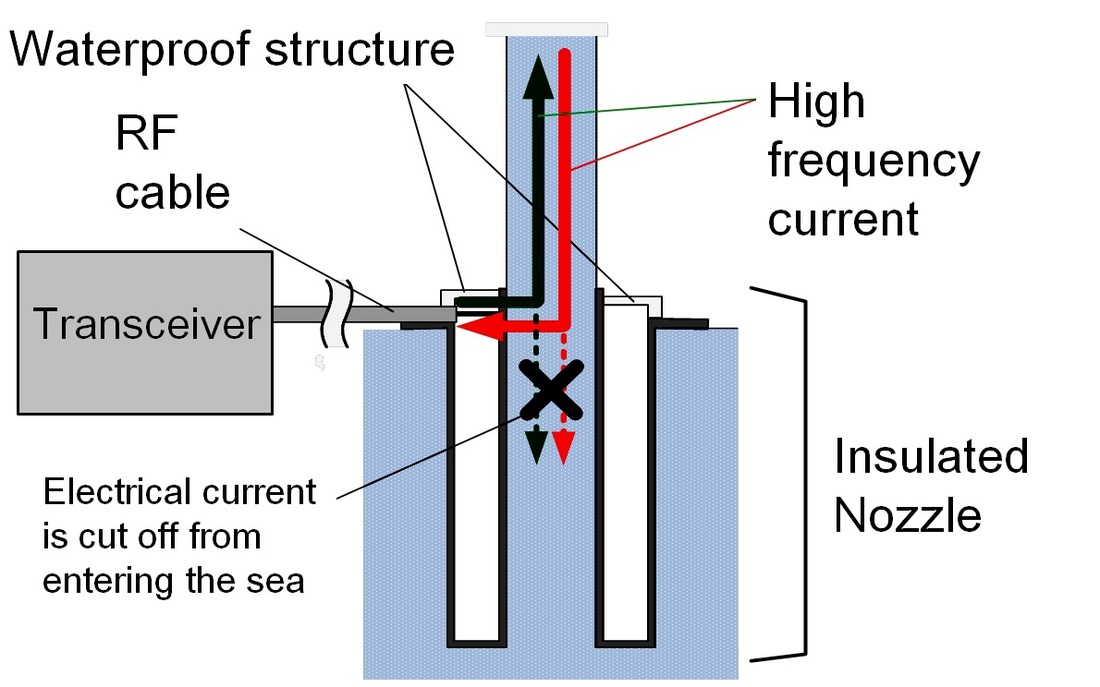|
An antenna made out of seawater? At first glance, it may seem on the level of an engineer’s idea of a parlor trick, but Mitsubishi Electric believes its SeaAerial Antenna has a future both on sea and land as a simple-to-set-up mobile antenna. Seawater being salty is chock full of sodium and chloride ions which turn it into a pretty good conductor of electricity—unlike pure water, such as distilled water, which is not. To make use of seawater’s conductivity, Mitsubishi has designed a special nozzle that insulates the seawater inside it from the surrounding sea. A coaxial cable from a transceiver is wired to a connection in the nozzle and to its metal lining. A pump attached to the nozzle unit pumps a plume of seawater up the nozzle towards the sky. The high-frequency current from the transceiver enables a current to be transferred to the plume via electromagnetic induction, and then a signal is broadcast just as in the case of a metal aerial. The reverse occurs when the aerial picks up an incoming signal. A high-frequency current flows through the plume of water and induces a current into the nozzle’s metal linings, which is then picked up by the coaxial cable. Currently, the SeaAerial Antenna works only at a designated frequency. In a demonstration of the technology (as seen in the photograph at top) Mitsubishi was able to show a live digital terrestrial TV program indoors transmitted from Tokyo Skytree. This is by no means the first time seawater has been used in this way. Daniel Tam is recognized as being the first to capitalize on the idea in 2007. He led a group of engineers working in the U.S. navy’s Space and Navel Warfare Systems Command in San Diego and came up with the idea of using an electromagnetic coil the size of a bagel to induce a current into seawater. When he pumped a spout of water through the center of the coil, he was able to send and receive radio signals. You can see Tam demonstrating his invention on YouTube. “By using our insulating nozzle instead of an electromagnetic coil to induce a current in the seawater plume, we have improved the antenna’s performance to the point we can receive a TV signal,” says Toru Fukasawa, manager at Mitsubishi’s Electromagnetic and Ultrasonic Wave Antenna Technology Dept. “We believe this is the first time this has been done. And by optimizing the diameter and height of the plume, we can achieve an efficiency of 70 percent for the radiated power in regards to the input power.” The technology is still being enhanced and reliability must be improved. Fukasawa says that because the SeaAerial is basically just a small pump and nozzle, it can easily be set up quickly along any sea coast, on a ship in need of an additional antenna, and on land in the aftermath of a disaster, for instance, when installed aerials may be knocked out. Now that’s a parlor trick worth perfecting. This first appared on my Forbes blog site: http://www.forbes.com/sites/jboyd
0 Comments
Leave a Reply. |
AuthorI cover the sci-tech-biz scene in Japan as well as current events. Contact me if you would like similar articles published on your site. Archives
April 2016
Categories |



 RSS Feed
RSS Feed
